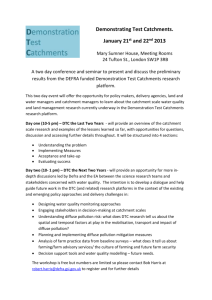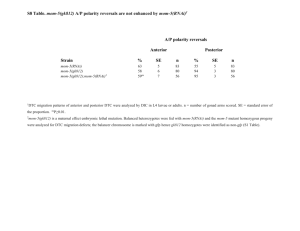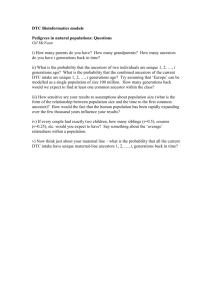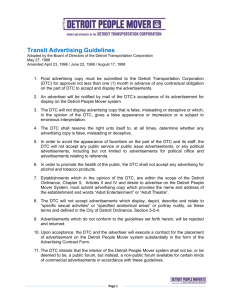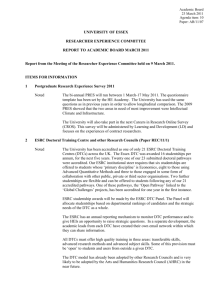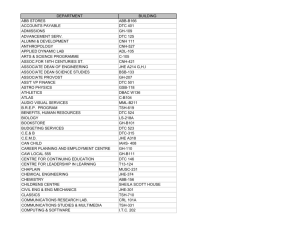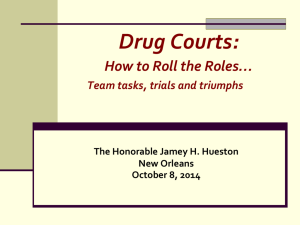Influence of Initial and Repeated Motivation on Case
advertisement
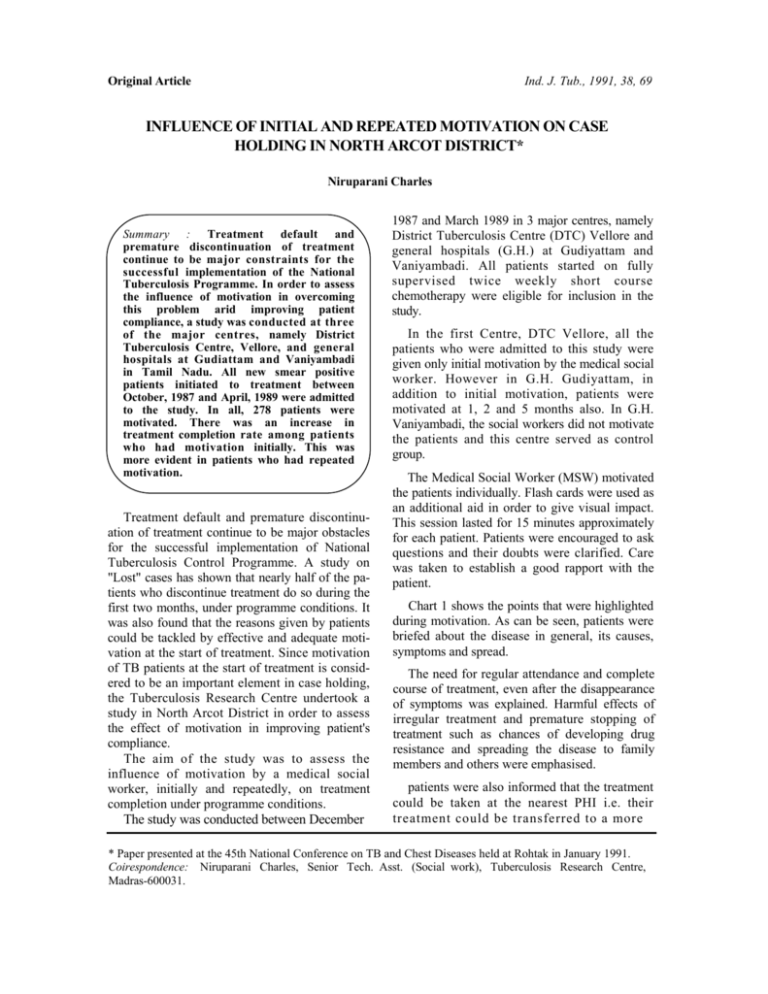
Ind. J. Tub., 1991, 38, 69 Original Article INFLUENCE OF INITIAL AND REPEATED MOTIVATION ON CASE HOLDING IN NORTH ARCOT DISTRICT* Niruparani Charles Summary : Treatment default and premature discontinuation of treatment continue to be major constraints for the successful implementation of the National Tuberculosis Programme. In order to assess the influence of motivation in overcoming this problem arid improving patient compliance, a study was conducted at three of the major centres, namely District Tuberculosis Centre, Vellore, and general hospitals at Gudiattam and Vaniyambadi in Tamil Nadu. All new smear positive patients initiated to treatment between October, 1987 and April, 1989 were admitted to the study. In all, 278 patients were motivated. There was an increase in treatment completion rate among patients who had motivation initially. This was more evident in patients who had repeated motivation. Treatment default and premature discontinuation of treatment continue to be major obstacles for the successful implementation of National Tuberculosis Control Programme. A study on "Lost" cases has shown that nearly half of the patients who discontinue treatment do so during the first two months, under programme conditions. It was also found that the reasons given by patients could be tackled by effective and adequate motivation at the start of treatment. Since motivation of TB patients at the start of treatment is considered to be an important element in case holding, the Tuberculosis Research Centre undertook a study in North Arcot District in order to assess the effect of motivation in improving patient's compliance. The aim of the study was to assess the influence of motivation by a medical social worker, initially and repeatedly, on treatment completion under programme conditions. The study was conducted between December 1987 and March 1989 in 3 major centres, namely District Tuberculosis Centre (DTC) Vellore and general hospitals (G.H.) at Gudiyattam and Vaniyambadi. All patients started on fully supervised twice weekly short course chemotherapy were eligible for inclusion in the study. In the first Centre, DTC Vellore, all the patients who were admitted to this study were given only initial motivation by the medical social worker. However in G.H. Gudiyattam, in addition to initial motivation, patients were motivated at 1, 2 and 5 months also. In G.H. Vaniyambadi, the social workers did not motivate the patients and this centre served as control group. The Medical Social Worker (MSW) motivated the patients individually. Flash cards were used as an additional aid in order to give visual impact. This session lasted for 15 minutes approximately for each patient. Patients were encouraged to ask questions and their doubts were clarified. Care was taken to establish a good rapport with the patient. Chart 1 shows the points that were highlighted during motivation. As can be seen, patients were briefed about the disease in general, its causes, symptoms and spread. The need for regular attendance and complete course of treatment, even after the disappearance of symptoms was explained. Harmful effects of irregular treatment and premature stopping of treatment such as chances of developing drug resistance and spreading the disease to family members and others were emphasised. patients were also informed that the treatment could be taken at the nearest PHI i.e. their treatment could be transferred to a more * Paper presented at the 45th National Conference on TB and Chest Diseases held at Rohtak in January 1991. Coirespondence: Niruparani Charles, Senior Tech. Asst. (Social work), Tuberculosis Research Centre, Madras-600031. NIRUPARANI CHARLES Chart 1. Contents of Motivation -Causes and symptoms of TB —Need for regular attendance and complete course of treatment even after the disappearance of symptoms —Harmful effects of irregular treatment and premature stopping of treatment —Treatment can be taken at a convenient PHI —The unimportance of hospitalization, special diet, tonics and bed rest convenient PHI at their request at any time. Finally, patients were apprised of the unimportance of hospitalization, special diet, tonics and bed rest. In order to assess the influence of motivation on treatment completion, a comparison was made between a group of patients who were started on treatment before commencement of the motivation study and patients who were admitted to the motivation study. Table 2 gives details of patients included in the study. As can be seen, 108 patients were started on treatment at DTC preceding motivation study period and 92 patients were admitted to motivation study at DTC. Seventy one patients were started on treatment at DTC and subsequently transferred to other PHIs preceding motivation study period. Seventy eight patients were motivated at DTC and subsequently transferred to other PHIs, 79 patients were started on treatment at Gudiyattam prior to motivation study and 108 patients were admitted to motivation study. Thirty seven patients were started on treatment at Vaniyambadi prior to motivation period and 50 patients were started on treatment during motivation study period. Table 3 shows the effect of motivation on treatment completion rate i.e. patients receiving INFLUENCE OF INITIAL AND REPEATED MOTIVATION ON CASE HOLDING IN NORTH ARCOT 80 percent or more of the prescribed chemotherapy. As can be seen, the completion rate went up from 52 percent to 63 percent showing an increase of 11 percent at DTC Vellore where there was only initial motivation. Among patients who received initial motivation at DTC and were subsequently transferred to other PHIs, the completion rate went up from 42 percent to 51 percent showing an increase of 9 percent. At Gudiyattam, where there was repeat motivation 71 in addition to initial motivation, the completion rate increased from 35 percent to 55 percent showing an increase of 20 percent. This increase is statistically significant. At Vaniyambadi where there was no motivation by MSW, the completion rate dropped by 5 percent. These figures, thus, bring out the importance of systematic motivation. There was an increase in treatment completion rate among patients who had motivation initially. This was more evident in patients who had repeated motivation.

